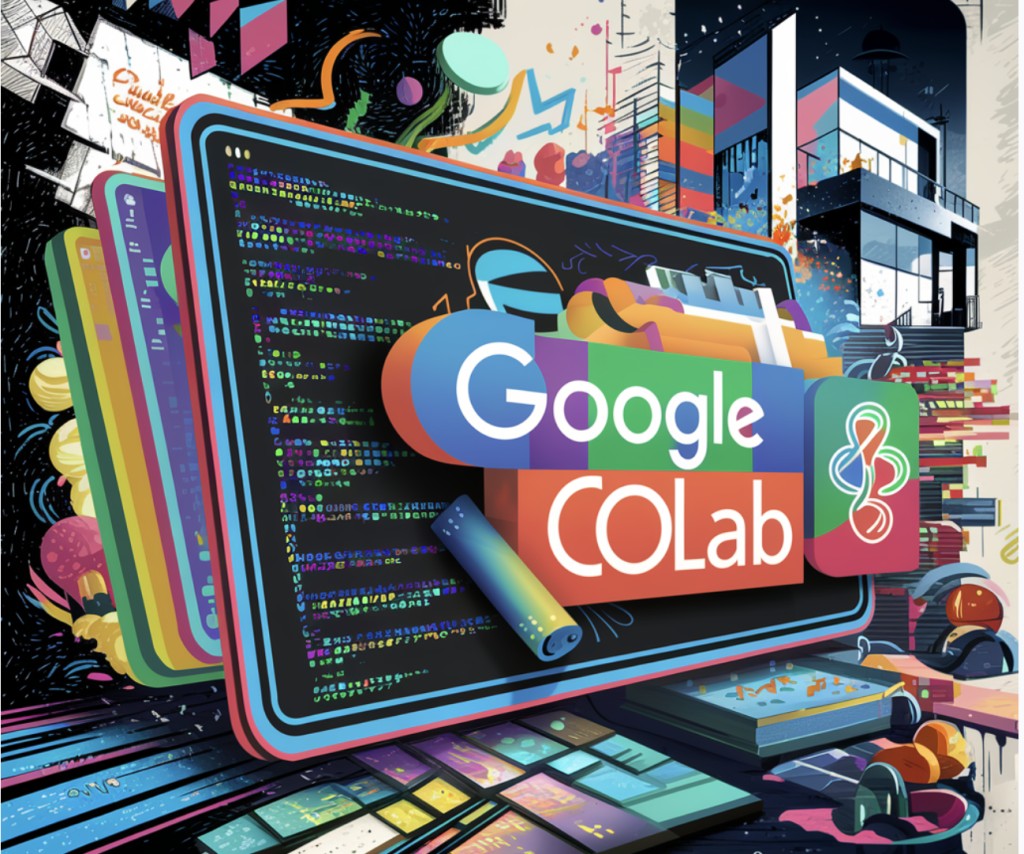Google Colab, short for Google Colaboratory, is a free cloud service that supports Python programming and machine learning. It’s a dynamic tool that enables anyone to write and execute Python codes on a browser. This platform is favored for its zero-configuration required, easy sharing of projects, good free GPUs, and great paid ones, making it a go-to for students, data scientists, and AI researchers. Whether your projects involve data analysis, machine learning, or just learning to program in Python, Google Colab provides a powerful, no-setup-required platform to accomplish your goals.
Now, Let’s dive into a 6-step tutorial on how to run your first code snippet on Google Colab.
Searching for Google Colab
To begin, search for Google Colab in your web browser. Type “Google Colab†into the search bar, and click on the first link to navigate to the Colab homepage. Here, you’ll be greeted with options to start or explore existing projects.Â
Creating a New Notebook
Upon reaching the Google Colab homepage, look for an option to create a new notebook, usually visible as a button or within the ‘File’ menu. Clicking this will open a new tab where you can start coding or writing.Â
Renaming Your Notebook
Your new notebook will have a default name like “Untitled##,†which you can change by clicking the title. Renaming your notebook to something more descriptive of its content can help with organization.Â
Connecting to the Kernel
Before coding, connect your notebook to a kernel by clicking the ‘Connect’ button at the top right. This connects your notebook to computational resources.Â
Running a Code Block
To run Python code, type your code into a code block, hit the play button to the left of the block, or use Ctrl+Enter. The output will be displayed below.Â
Adding New Blocks
Expand your notebook by adding more code or text blocks through the ‘+ Code’ or ‘+ Text’ buttons. This organization allows for a blend of documentation and coding.Â
Key Features of Google Colab
After discussing a small tutorial on how to start using Google Colab. Let’s check some points encapsulating the main features of Google Colab that make it different and versatile:
Free Access to GPUs: Google Colab provides free access to NVIDIA GPUs, making it easier for users to run machine learning models and data analysis without expensive hardware.
No Setup Required: Start coding immediately without any complicated setup processes. Colab notebooks run entirely in the cloud, saving you from the hassle of installing libraries and dependencies on your local machine.
Collaboration Made Simple: Share your Colab notebooks like you would with Google Docs or Sheets. Collaborate with colleagues or classmates in real-time, making it ideal for team projects and educational purposes.
Integration with Google Drive: Seamlessly save your notebooks in Google Drive. This integration facilitates easy project management and sharing and allows users to access data stored in Drive.
Support for Popular Data Science Libraries: Colab comes pre-loaded with libraries such as TensorFlow, PyTorch, Keras, and OpenCV, allowing users to dive straight into data science projects without additional installations.
Interactive Visualizations: Create interactive data visualizations using tools like Matplotlib, Seaborn, and others directly in your notebooks, making data analysis more intuitive and insightful.
Environment Customization: While Colab provides a managed environment with pre-installed libraries, it allows users to install any Python package, use Jupyter extensions, and customize their environment.
Support for Various Data Sources: Easily import data from your local system, Google Drive, and even from GitHub. Colab also supports various formats, including CSV, JSON, and Excel, facilitating diverse data science and machine learning projects.
Execution of Shell Commands: Execute Linux shell commands directly in Colab notebooks, offering users the flexibility to perform operations like file system management and package installation within their coding environment.
Scalability: For users needing more power, Google offers Colab Pro and Colab Pro+, which provide more memory, longer runtime, and even access to more powerful GPUs for intensive computation tasks.
These features make Google Colab a versatile and accessible platform for anyone looking to perform data analysis, machine learning, or any Python-based research or project.
Conclusion
Google Colab simplifies the coding process in Python, offering an accessible platform for various projects from data analysis to machine learning. With the ability to run code, access some good free GPUs and great paid ones, and share your work, it’s an invaluable resource for the modern programmer or researcher. This guide has walked you through the initial steps, from creating your first notebook to executing Python code, all within a platform that combines ease of use with powerful computational resources.Â
The post How to Use Google Colab: A Beginner’s Guide appeared first on MarkTechPost.
Source: Read MoreÂ

